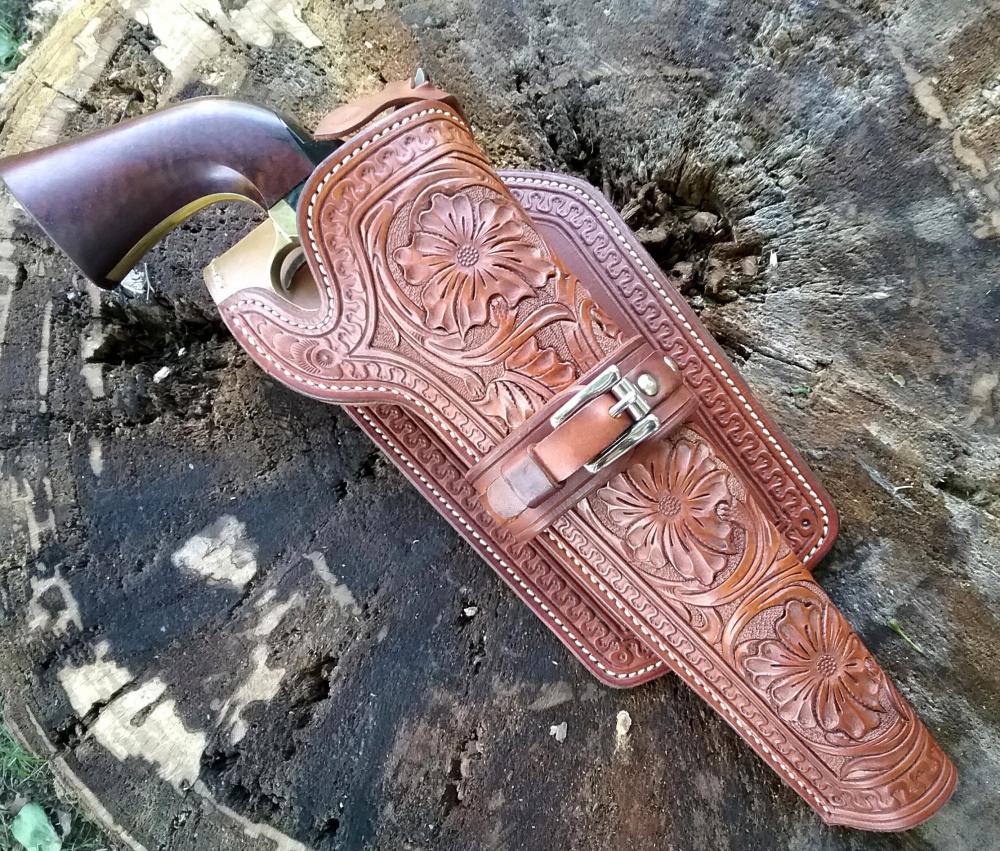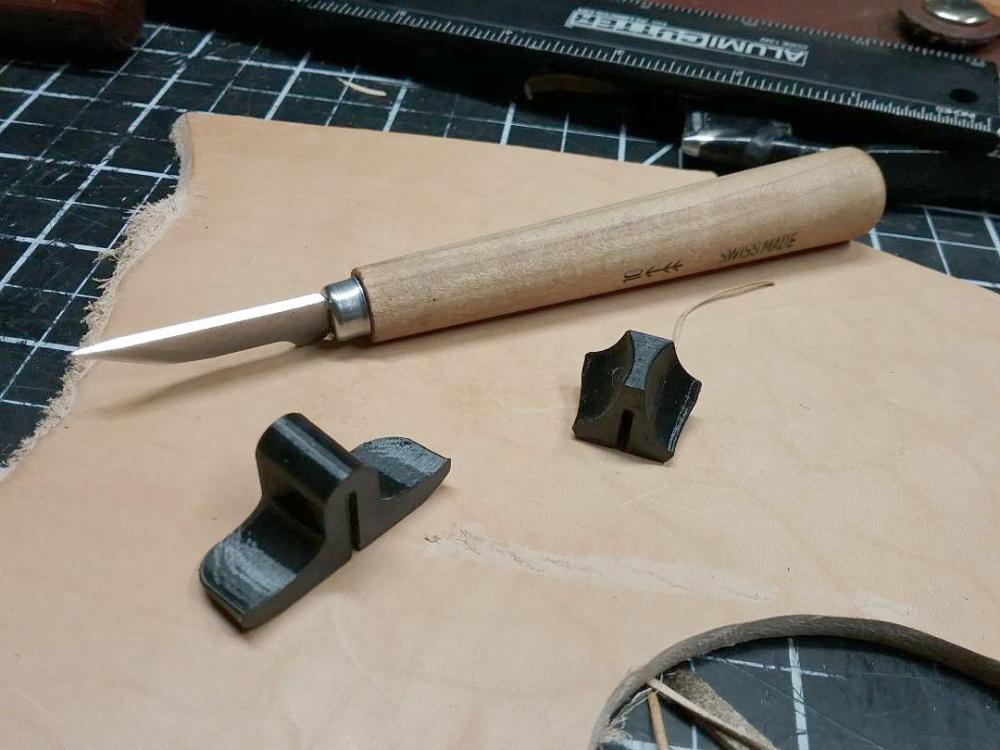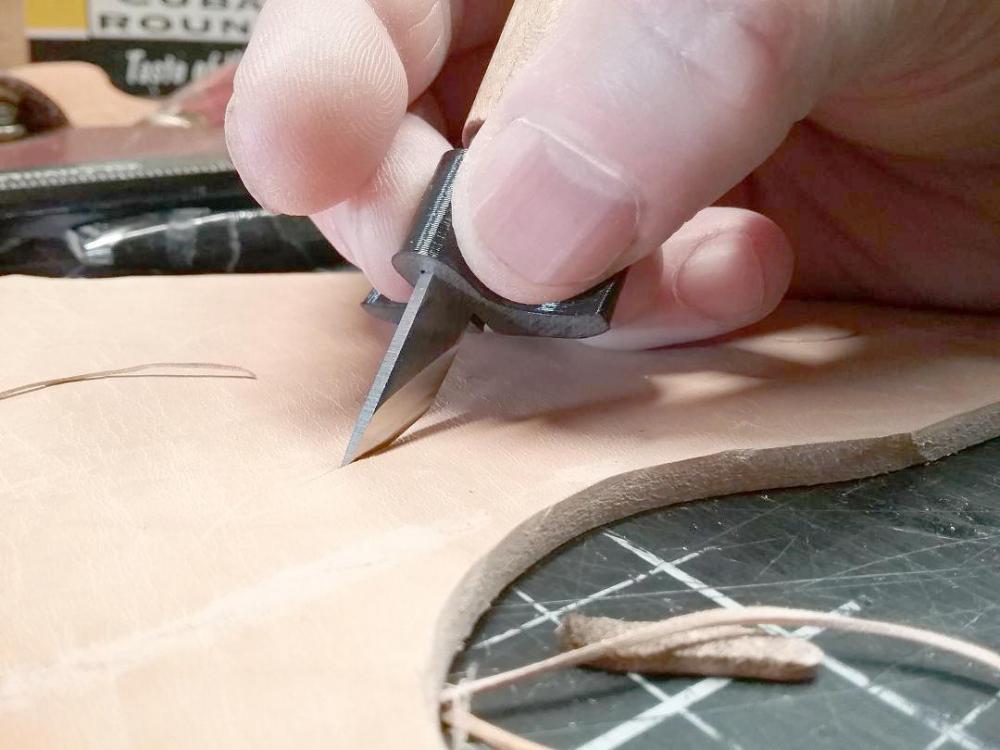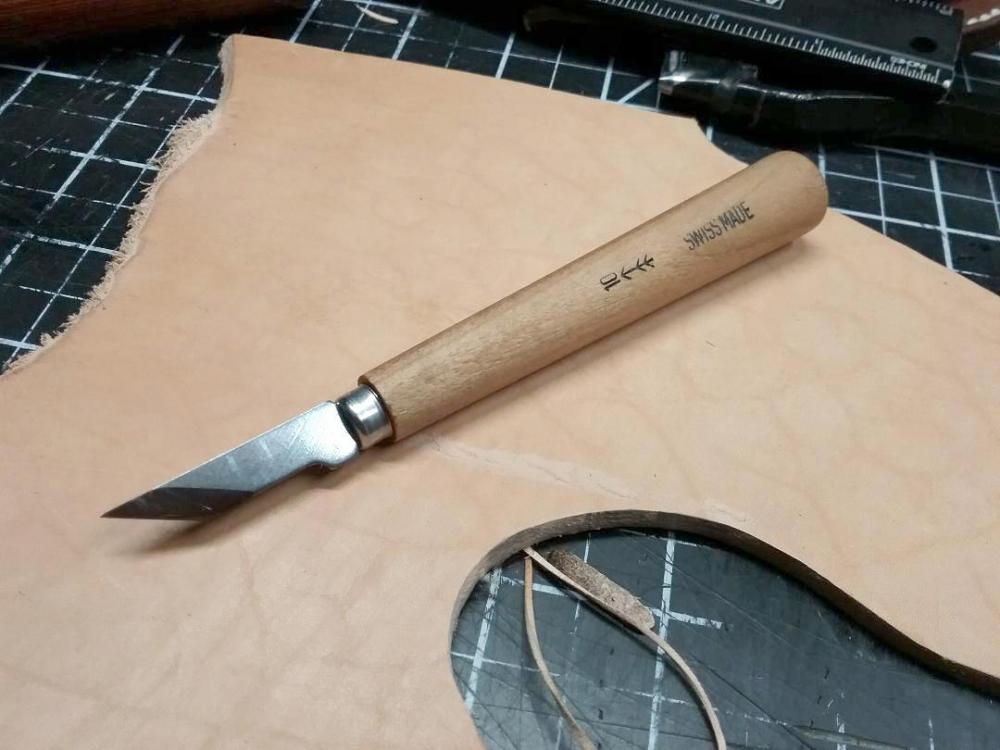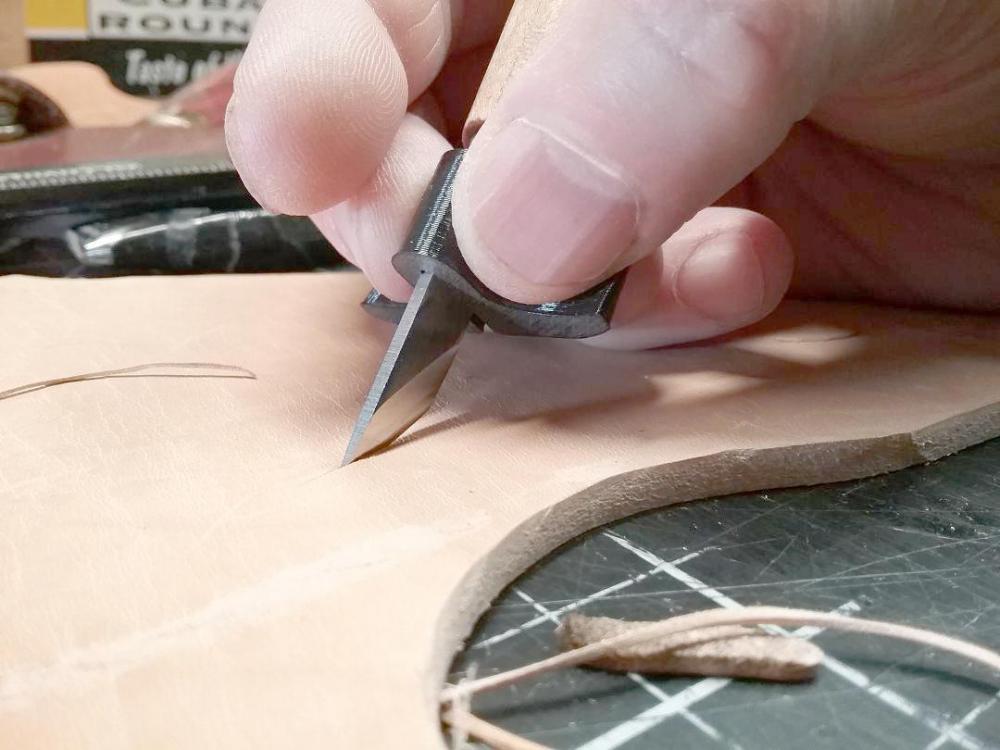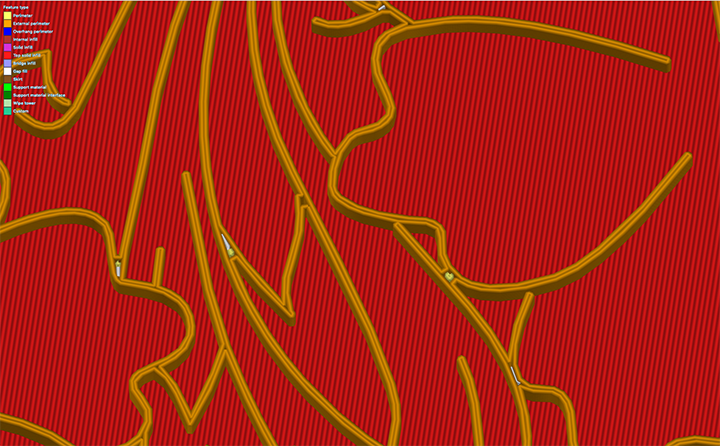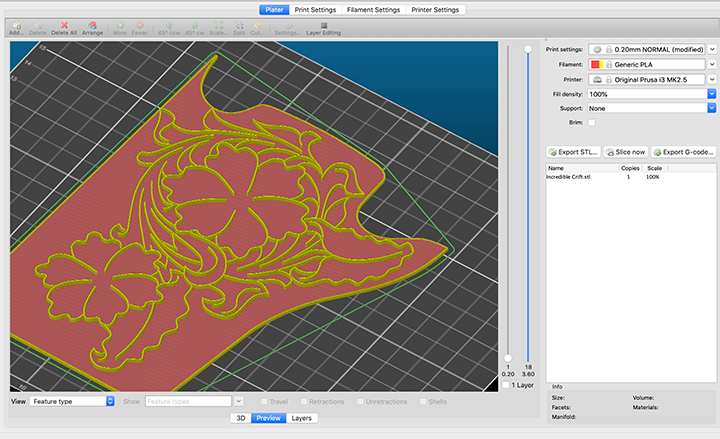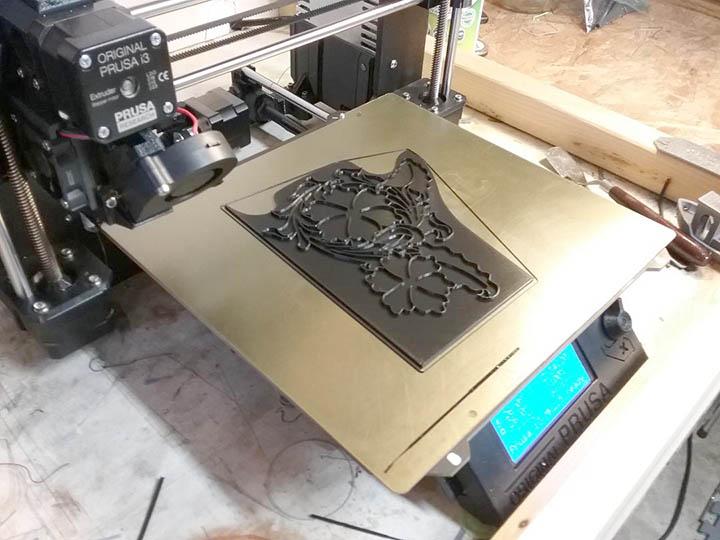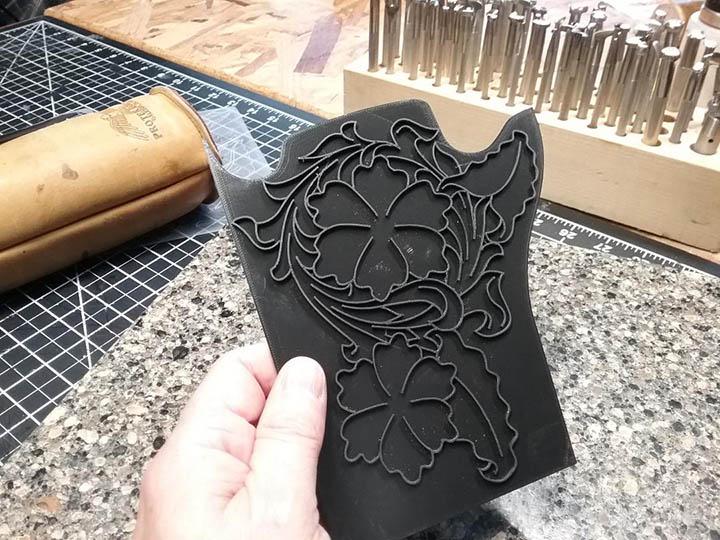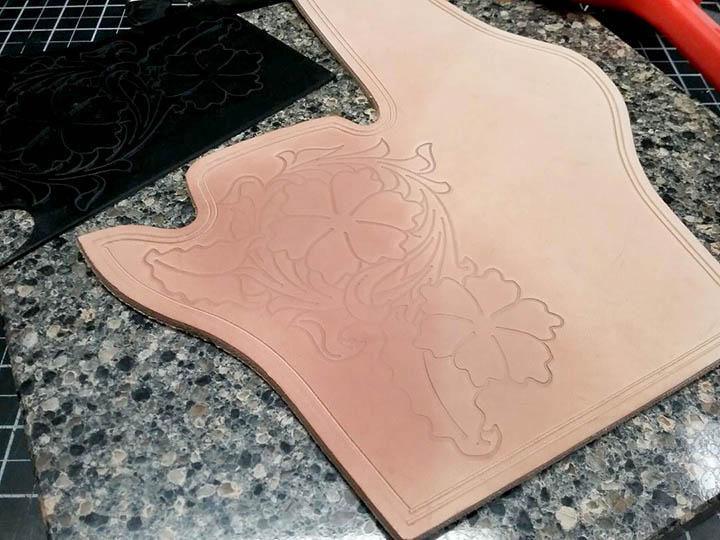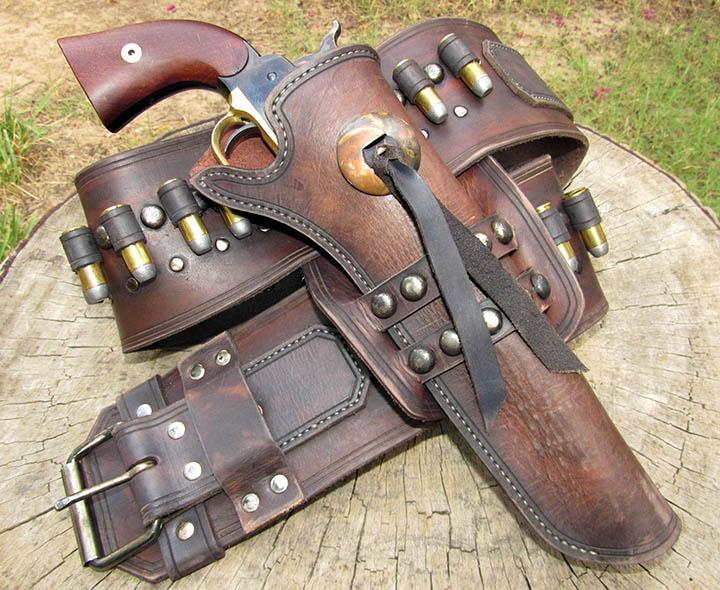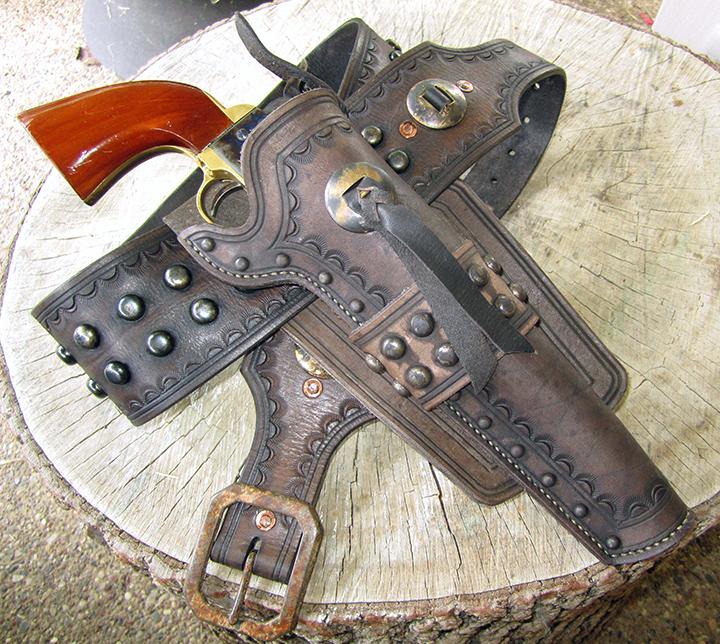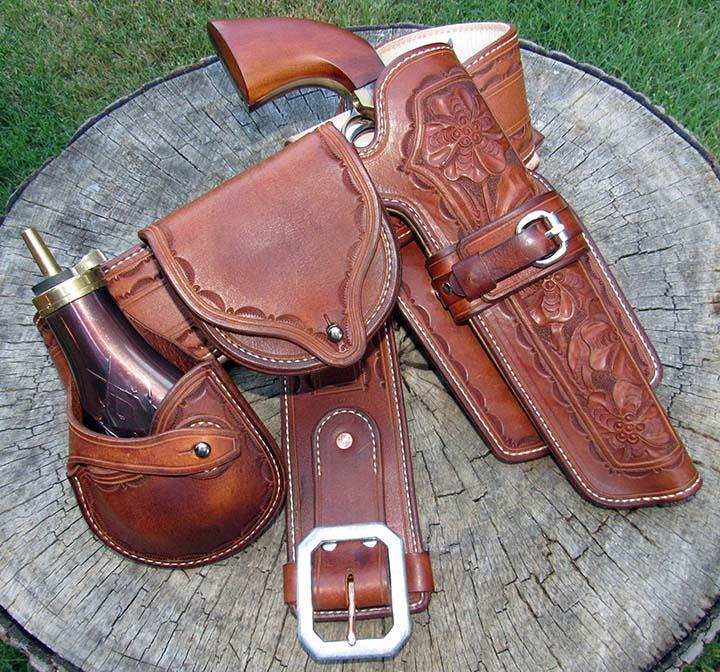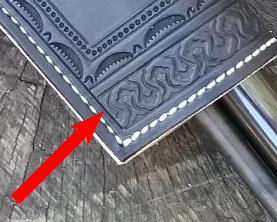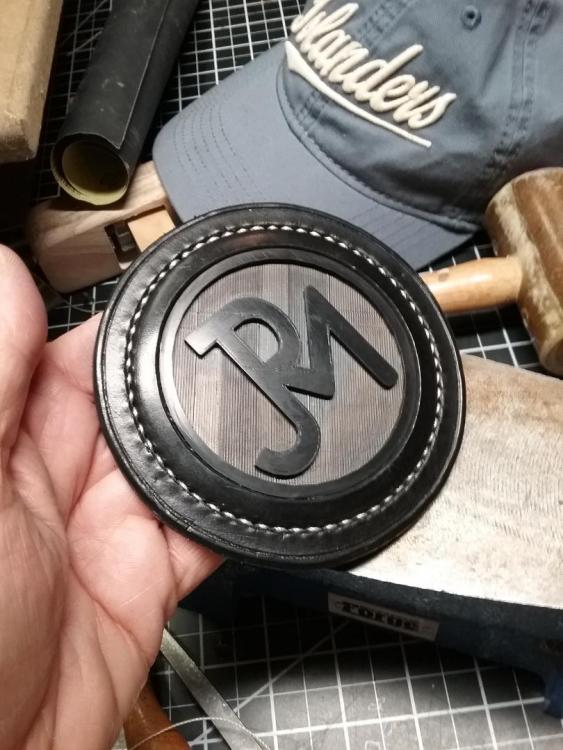
Chakotay
Members-
Posts
90 -
Joined
-
Last visited
Content Type
Profiles
Forums
Events
Blogs
Gallery
Everything posted by Chakotay
-
Latest 1851/60 Holster...
Chakotay replied to Chakotay's topic in Gun Holsters, Rifle Slings and Knife Sheathes
Thanks guys. The image was taken with my phone. The background is an old stump that has deteriorated quite a bit over the years (plus we've had a lot of rain recently so there's some mold/fungus in the mix). So natural sunlight, but in the shade. I've discovered that is the key to decent photos. After tooling, I dyed with Fiebings and finished with neatsfoot. -
-
4 oz is what I normally use. I buy sides especially for this. You can also adjust the width. Usually I make them around 3/4 inch, but lately I've been making my cartridge loops about an 1 inch wide.
-
Just posted on one of the other forum topics about my main cutting knife and realized I should prob mention it here as well. Another useful print is custom finger grips. I designed a couple of different styles in Tinkercad for my primary knife. Greatly increases grip, leverage, and control.
-
Used straight or round knife on a budget - brands?
Chakotay replied to GeneH's topic in Leatherwork Conversation
I'm a little late on this topic, but may I suggest some of the various wood carving knives from Pfeil? I bought mine from Woodcraft, but looks like you can get them in a lot of places. They're Swiss-made, come in a variety of sizes and blade profiles, and whatever metal they're made from holds an edge for a LONG time. They come razor sharp, but I find the edges need polishing (they're intended for wood so maybe a smooth, mirrored edge isn't important for that?) Prices range from around $15 to $30. I bought this size #10 for $20. It's my go-to knife for 90 percent of all my cutting. -
To add or not to add? (the wooden board to the back)
Chakotay replied to Mocivnik's topic in Leatherwork Conversation
Is the back board going to be pegboard? You can hold just about everything once you get your hooks/holders. But if you can't attach it to the wall, it's going to be a bit difficult. As someone already alluded to, attaching it to the desk is going cause problems when you start pounding on it as the vibrations transfer to the back board. Can you attach it to that dresser(?) on the right? Small space, but don't know how many tools you have. I like to have my workbench cleared of everything. Especially helpful when you're cutting a side or double shoulder -
A perimeter is one wall of plastic filament the width of the printer's nozzle. Theoretically, it's the thinnest structure the printer can create. My printer has a standard 0.4mm nozzle. So "2 perimeters" would be two walls of plastic (I'm guessing it'll be 0.4mm x 2 = 0.8mm. Though I've never really tested my printer for accuracy.) I can measure it with a micrometer when I get home. But it's a bit of a moot point; while I was carving the lines didn't seem too big at all. They were about the same width as my swivel knife blade. You can see the two walls in this slicer close-up:
-
Yes, the lines are thick, but the they're only 2 perimeters wide. I don't think a 1-perimeter wall would survive being hammered into leather. For a quick, customized, repeatable guide, I think it works perfectly. Beats having to trace it out each time. I've already done the tooling (pict below . . . not the greatest work, but you get the point). Just regular PLA (cheap Inland brand from Micromart), 100% infill. I wasn't really paying attention to the extrusion height, but looking at the file it's 3.5 mm total height.
-
Been thinking about it for a while for holsters I make on a regular basis, so I finally decided to give it a try. For those into 3d printing, you know it can be a process... 1. Traced my holster in Adobe Illustrator and designed my pattern. Once done, I exported the files as an .svg. 2. I then imported the files into Tinkercad, extruded, and export as .stl 3. Import the .stl into my slicer (I used Slic3r Prusa edition). 4. Print the file! My printer is a Prusa Mk2.5S. The print is lightly wet-sanded to get the stamping surface flat. I discovered it was better to lightly hammer the pattern onto the leather rather than just trying to press the impression on.
-
tooled black powder rig . . .
Chakotay replied to Chakotay's topic in Gun Holsters, Rifle Slings and Knife Sheathes
-
tooled black powder rig . . .
Chakotay replied to Chakotay's topic in Gun Holsters, Rifle Slings and Knife Sheathes
Thanks! That rig was a special request, as it's not my typical look. A little too 'clean'. My usual specialty is weather/aged gun leather. Below is a black powder rig that's more my style . . . -
No need to grind your stamps in half. Just position the leather on your quartz slab (or whatever you're using as a backing) so that the stamp will fall partly on the slab, and partly off. Obviously, it may be a little tricky depending on what your design exactly is. That's how I get half-impressions on larger border stamps when I run out of space:
-
I'll second what everyone else has been said. Print 100% infill, lightly wet sand with fine grit face-down on your quartz slab (or whatever you're using for stamping) to flatten out any imperfections. The potential for 3d printing in leatherwork is exciting. I've been playing with scanning my patterns and tracing them in Adobe Illustrator. Then adding my own templates to it (think custom versions of Tandy Craftaids). No rule against combining the two artforms. Below is a pict of a 3D-printed brand sewn into a circular leather frame I made for a customer's luggage.
-
Stay calm!! Slowly back away from the knife... Silly, but manufacturers have to do this because their products may end up in California, which has a huge, ever-changing list, of chemicals they're protecting us from. fyi: Brass: contains lead. Stainless Steel: Chromium. Both known carcinogens. So just don't consume your knife and you'll be fine. ---j


